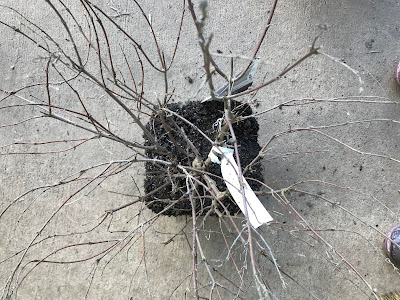This 20 minute talk will give you some fun easy ideas for bringing neighbors together. We can all make a difference!
Take a Street and Build a Community Shani Graham at TedxPerth
Our NPKs could be a part of something like this - good information for great verges!
From the Benton County Master Gardeners, the Corvallis Evening Garden Club, the Corvallis Sustainability Coalition, and the City of Corvallis Civic Beautification and Urban Forestry Group. Welcome!
Tuesday, May 30, 2017
Thursday, May 25, 2017
What your trees need
now!
Water!
First and foremost any newly planted or struggling
trees probably need water. That water should be delivered weekly and in a large
volume, rather than daily in a light sprinkle. Deep watering helps trees
develop deep drought resistant roots and keeps them out of your lawn. Water
trees with at least 10 gallons per inch of tree diameter. The easiest way is to
purchase a watering bag from a local nursery. These hold between 15 and 20 gallons.
Mulch!
This is a great time of year to
spread mulch, don’t wait until it’s hot and dusty. Get out there now and add a
few inches in a circle that extends out to the drip-line of your tree. Mulch
should not touch the trunk or surface roots as this can lead to decay. Keep
mulch 3-4” deep starting 6” from the tree. Mulch helps reduce weeds, moderates
soil temperature, helps keep soil moist and reduces compaction.
Keep
an eye out for pests
Early detection can make control
of insects and disease much easier. Often people wait until a tree is in crisis
mode before calling an arborist. If you see something odd or unusual, such as
scorching of leaves, yellowing or drooping of foliage, insect damage, or
excessive dead limbs call a professional, early detection can save a tree's life
and save you money and frustration.
Homemade
watering bucket
If you don’t want to shell out for
a watering bag or have a lot of trees to water try making your own watering
bucket. Just take a 5-gallon or larger bucket and drill a bunch of 1/8” holes
in the bottom. Then just fill the bucket as many times as it takes to provide
the amount of water in the formula below.
Watering
formula
Tree diameter (inches) × 10 = number of gallons per
week.
Monday, May 8, 2017
Planting Instructions
1. Dig your planting hole the same depth as your pot and twice as wide as your pot.
2. The way you prepare the plant depends on what you find inside the pot. We'll go over that, below, with photos.
Our goal is to encourage the plant to extend its roots into your garden soil as soon as possible. This is because the potting mix it is currently growing in was designed to drain water very rapidly so that it could survive living in a plastic pot. After planting, the water drains even more rapidly out of that potting mix into the real soil and your new plants could be in a tiny desert until they are able to reach that real (water holding) soil. Below, you'll see how we recommend planting based on the condition of your new plant's roots.
Tuesday, May 2, 2017
Subscribe to:
Comments (Atom)












